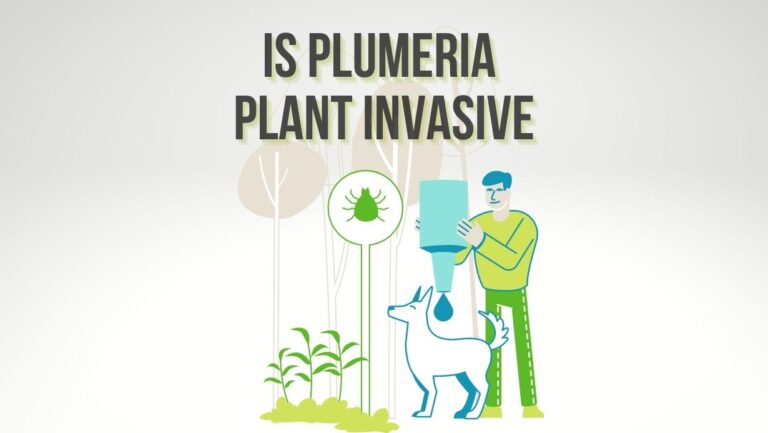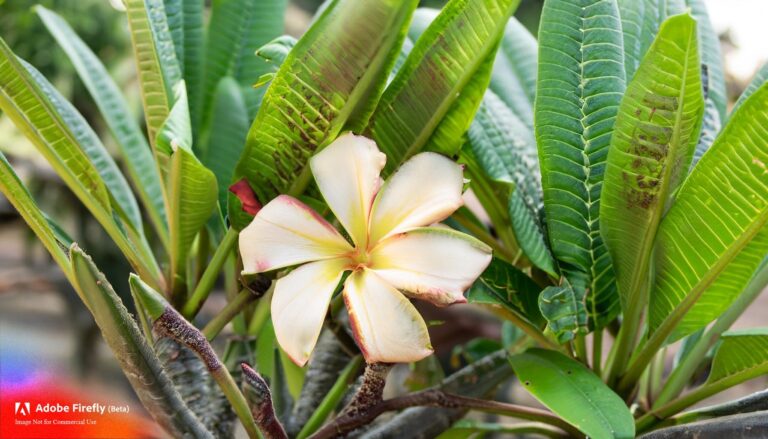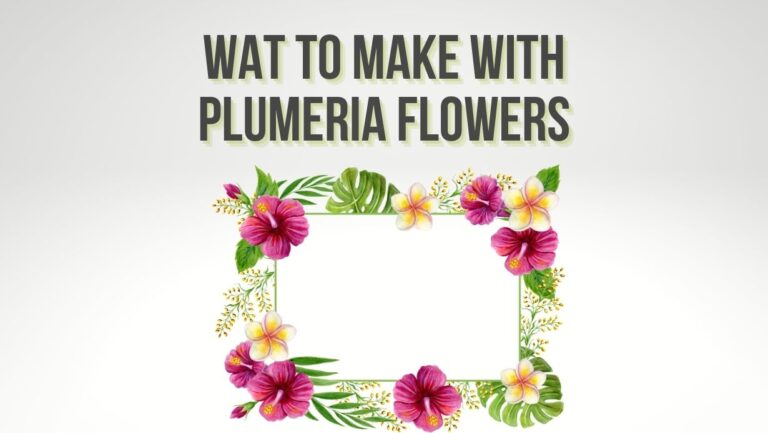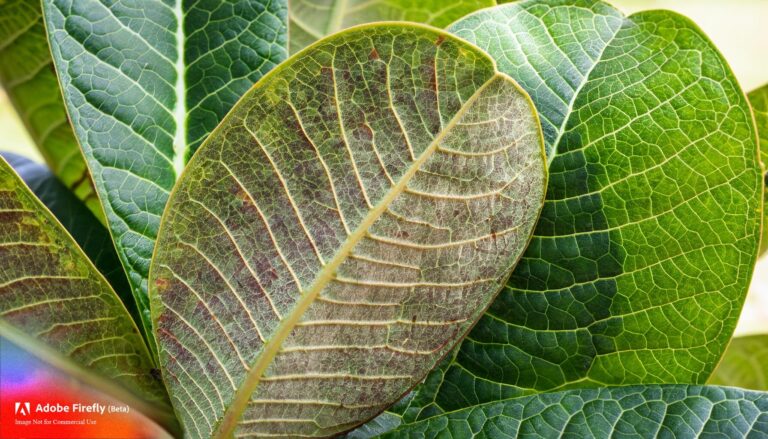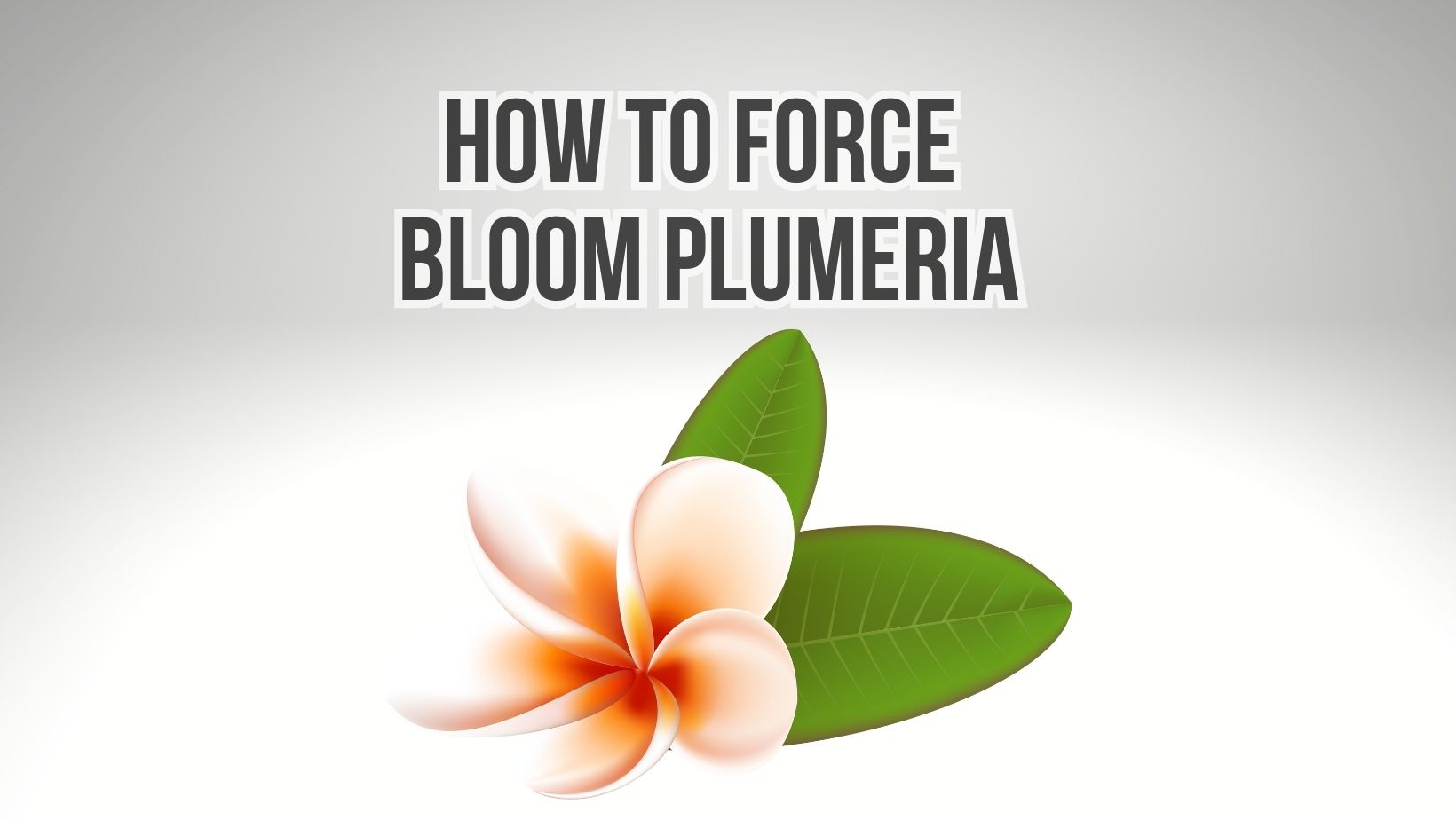
If your plumeria is not blooming, several factors could contribute to this issue. Here are some common reasons why plumerias may not bloom and steps you can take to encourage blooming:
- Insufficient Sunlight: Plumerias require full sunlight to bloom abundantly. Ensure your plumeria is receiving at least 6 to 8 hours of direct sunlight each day. If it’s grown indoors, place it near a south-facing window or use grow lights to provide adequate light.
- Immaturity: Plumerias typically take a few years to mature and reach blooming size. If your plumeria is young or recently propagated, it may need more time to develop a robust root system and establish itself before it can produce blooms.
- Nutrient Imbalance: A lack of essential nutrients, particularly phosphorus, can hinder flower production. Use a balanced fertilizer specifically formulated for flowering plants and supplement with a higher phosphorus fertilizer during the blooming period. Avoid excessive nitrogen, as it can promote foliage growth at the expense of flowers.
- Improper Pruning: Pruning plays a role in stimulating blooming. Ensure you are pruning your plumeria correctly and at the right time. Prune in late winter or early spring before new growth emerges to shape the plant and remove any dead or overgrown branches.
- Watering and Drainage: Overwatering or insufficient drainage can prevent plumerias from blooming. Ensure you are not overwatering your plumeria and that the soil has proper drainage. Water when the top inch (2.5 centimeters) of the soil feels dry, and ensure excess water can freely drain from the pot.
- Environmental Factors: Plumerias may require specific environmental conditions to initiate blooming. Ensure your plumeria is in a warm environment with temperatures above 60°F (15°C). Cooler temperatures, excessive shade, or inconsistent temperature fluctuations can inhibit blooming.
- Dormancy Period: Plumerias naturally go through a dormant period during winter. This period of rest is important for blooming. Allow your plumeria to enter dormancy by reducing watering and providing cooler temperatures (around 50-60°F or 10-15°C). During this time, refrain from fertilizing and water sparingly.
By addressing these factors, you can encourage your plumeria to bloom more successfully. Remember, plumerias may require time, proper care, and optimal conditions to reach their blooming potential. Be patient and persistent, and your plumeria will reward you with its beautiful and fragrant blooms.
Why Does My Plumeria Not Flower?
There are several reasons why a plumeria may not be flowering:
- Insufficient sunlight: Plumerias require full sun to bloom profusely. Lack of adequate sunlight can hinder flower production.
- Immaturity: Plumerias typically take a few years to mature and reach blooming size. Young or recently propagated plumerias may need more time to establish themselves before they start producing blooms.
- Nutrient imbalance: A lack of essential nutrients, particularly phosphorus, can inhibit flower formation. Ensure your plumeria is receiving proper fertilization, including a balanced fertilizer with higher phosphorus levels during the blooming period.
- Improper pruning: Incorrect pruning or pruning at the wrong time can disrupt the flowering process. Prune plumerias correctly in late winter or early spring before new growth emerges to stimulate blooming.
- Environmental factors: Inconsistent or unfavorable environmental conditions, such as extreme temperature fluctuations, inadequate warmth, or excessive shade, can affect flower production.
- Overwatering or underwatering: Improper watering practices, including overwatering or underwatering, can impact plumeria flowering. Ensure you are watering appropriately and maintaining proper soil moisture levels.
Does Plumeria Need Full Sun?
Yes, plumeria plants require full sun to thrive and produce abundant blooms. Plumerias should be placed in a location that receives at least 6 to 8 hours of direct sunlight each day. Adequate sunlight is crucial for the growth, development, and flowering of plumeria plants. Insufficient sunlight can result in reduced flower production and overall weaker growth. Therefore, it is important to ensure that your plumeria plant is placed in a spot where it can receive ample sunlight throughout the day.
How Long Does It Take for Plumeria to Flower?
The time it takes for a plumeria plant to flower can vary depending on several factors, including the variety of plumeria, growing conditions, and the size and maturity of the plant. In general, it takes about 2 to 5 years for a plumeria to reach blooming size and produce its first flowers. However, it’s important to note that some plumeria varieties may bloom earlier, while others may take longer. Additionally, providing optimal growing conditions, proper nutrition, and adequate sunlight can help promote faster blooming in plumerias
How Many Times Do You Water a Plumeria?
The frequency of watering a plumeria can vary depending on factors such as climate, pot size, and environmental conditions. As a general guideline, water your plumeria when the top inch (2.5 centimeters) of the soil feels dry.
During the active growing season, which is typically spring and summer, plumerias in pots may require watering approximately once every 7 to 10 days. However, it’s important to note that this is a general guideline and may vary based on your specific conditions.
To determine the watering frequency for your plumeria, it’s best to monitor the moisture level of the soil. Use your finger to check the soil moisture by inserting it about an inch (2.5 centimeters) deep into the soil near the root zone of the plumeria. If it feels dry at that depth, it indicates that it’s time to water. If it still feels moist, you can wait a bit longer before watering again.
How Do You Make Plumeria Grow Faster?
While various factors influence the growth rate of plumerias, you can encourage faster growth by following these tips:
- Provide ample sunlight: Ensure your plumeria receives full sun for at least 6 to 8 hours per day. This promotes optimal growth and flower production.
- Optimize growing conditions: Provide a warm and well-draining environment for your plumeria. Maintain temperatures above 60°F (15°C) and ensure proper soil drainage to avoid waterlogging.
- Fertilize appropriately: Use a balanced fertilizer formulated for flowering plants and follow the recommended application instructions. Supplement with a higher phosphorus fertilizer during the blooming season to encourage flower formation.
- Prune correctly: Prune your plumeria in late winter or early spring to remove dead or overgrown branches, promote branching, and stimulate growth.
- Proper watering: Water your plumeria when the top inch (2.5 centimeters) of the soil feels dry. Avoid overwatering or underwatering, as both can hinder growth. Provide sufficient water without creating waterlogged conditions.
Why Is My Champa Not Flowering?
Champa, also known as plumeria, may not be flowering due to various reasons, including:
- Insufficient sunlight: Champa plants require full sun to bloom abundantly. Lack of adequate sunlight can hinder flower production.
- Immaturity: Young or recently propagated champa plants may need more time to mature and establish themselves before they start producing blooms.
- Nutrient imbalance: A lack of essential nutrients, particularly phosphorus, can impact flower formation. Ensure your champa plant receives proper fertilization, including a balanced fertilizer with higher phosphorus levels during the blooming period.
- Improper pruning: Incorrect pruning or pruning at the wrong time can disrupt the flowering process. Prune champa plants correctly in late winter or early spring before new growth emerges to stimulate blooming.
- Environmental factors: Inconsistent or unfavorable environmental conditions, such as extreme temperature fluctuations, inadequate warmth, or excessive shade, can affect flower production in champa plants.
- Overwatering or underwatering: Improper watering practices can impact champa flowering. Ensure you are watering appropriately, avoiding overwatering or underwatering, and maintaining proper soil moisture levels.
By addressing these factors and providing the necessary care and conditions, you can encourage your champa plant to bloom and enjoy its beautiful flowers.


